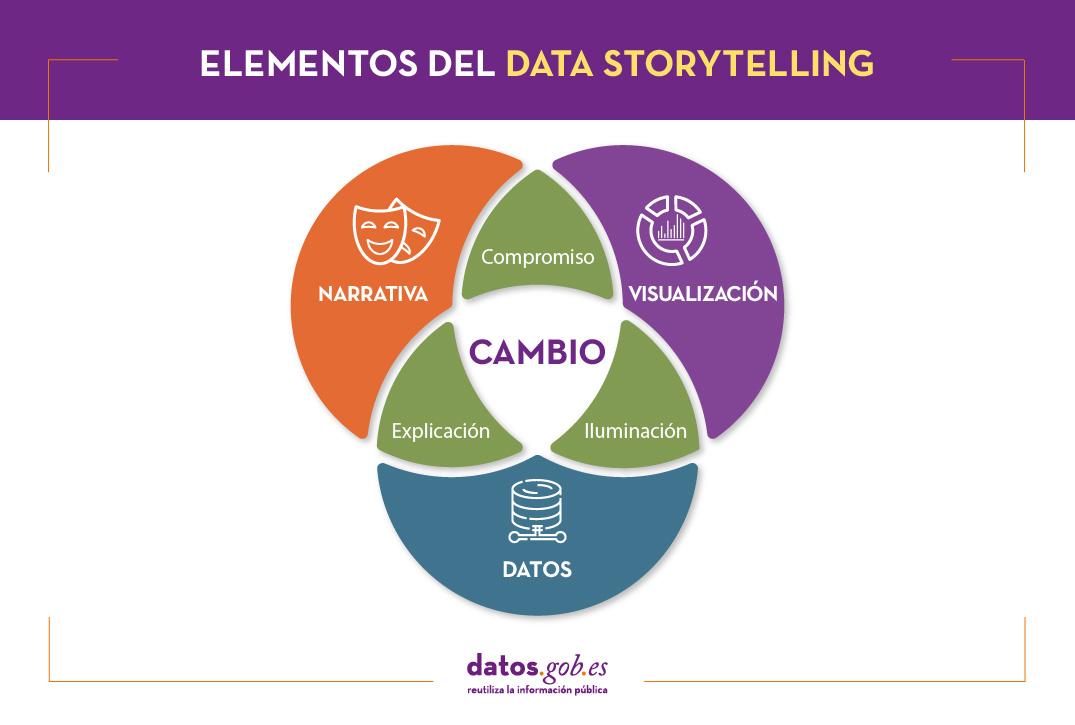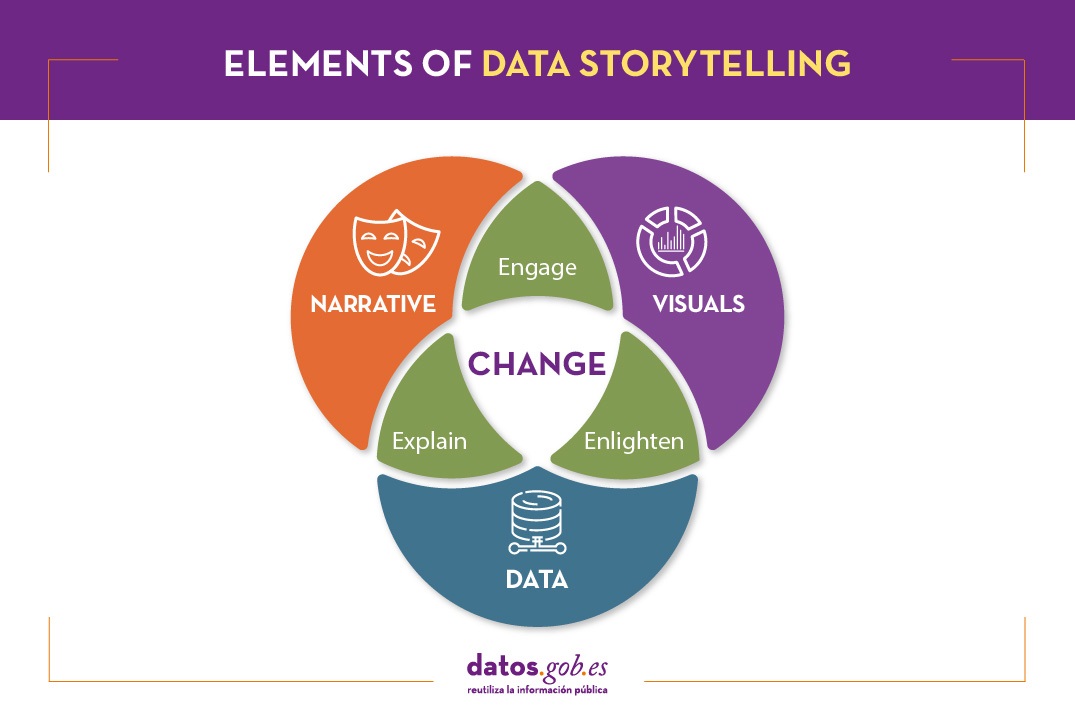
Nowadays, no one can deny the value hidden in data: trends, areas for improvement or business opportunities are just some of the knowledge that can be found behind a series of figures. A correct analysis of an organization's internal and external data can provide a great competitive advantage and drive better decision making.
However, extracting that value is not always easy. The data can be difficult to understand and the analyses made from it need to be communicated effectively. In this sense, the usual mechanism for displaying data is visualizations. But in a world so saturated with data and knowledge, visualizations alone may not achieve the desired result. It is often necessary to add a good explanation in the form of a story to make an impact on the receiver.
The importance of narrative
We all like to be told stories that catch our attention. We remember things better if they are integrated into a narrative. Proof of this is this study in the book Made to Stick): after a series of one-minute interventions in which an average of 2.5 statistics were provided, only 5% of the listeners were able to remember an individual figure. However, 63% remembered the story told.
Stories manage to engage us, giving the data a context related to our interests and concerns. In this way, the data acquire greater meaning, and it is easier to drive the implementation of related actions.
This is the context in which data storytelling appears.
What is data storytelling?
Data storytelling consists of communicating the information resulting from data analysis through a story. It involves three ingredients: data, visualization and narrative. These three elements combine to result in effective communication:
- By combining narrative and data we move into the realm of explanation: thanks to context the audience understands what is happening (or going to happen) and why it is important.
- By combining visual elements with data, what we can call "enlightenment" happens: insights are displayed in a way that is eye-catching and easy to understand, allowing relationships and patterns to be observed.
- By combining narrative and visual elements, you connect with the audience, generating engagement: thanks to formulas linked to the entertainment sector, you get the audience's attention.
When combined, you get a data-driven story that can influence and drive change.

Data storytelling is the foundation of data journalism, but it is also increasingly used within public and private organizations to convey the ideas behind the data both internally and externally.
What do you need to consider in order to tell a story with data?
Transforming data into valuable information and telling a story requires knowledge in all three of the above areas.
The first step is to think about what our objective is. Based on this we will determine the message we want to launch, which must be clear and simple. In order to communicate it effectively, it is necessary to know the audience and their level of knowledge on the subject. The approach, tone, medium and data we use will depend on this.
It is also necessary to know the basics of data analysis and visualization. There are a multitude of tools at our disposal that we can use. It is important to choose the type of graphic to use, depending on what we want to show (comparative, trends, distributions, etc.), as well as to pay great attention to the use of color and hierarchies in the information.
To meet these needs, it is sometimes necessary to have multidisciplinary teams where different types of skills are mixed. However, simple tools designed for use by anyone are also emerging, as we shall see below.
Integrating data storytelling in open data portals: the example of Aragon Open Data
Data storytelling is also reaching open data portals as a way to bring data closer to citizens and boost its reuse, amplifying its impact.
Aragon's open data portal has developed Open Data Focus, a free service that allows portal users to develop and share their own stories based on the region's open data. It is a very intuitive tool, for which no technical knowledge is required. In the portal you can see some of the digital narratives developed around different topics of interest. In this document you can learn more about the context, objectives, methodology and results of the project.
Aragón Open Data Focus is an innovative and pioneering experience in our country, which brings public sector information closer to citizens. Given the importance of narrative and visualization in the understanding of data, it is not surprising that soon we will know more success stories in this regard.
Content prepared by the datos.gob.es team.